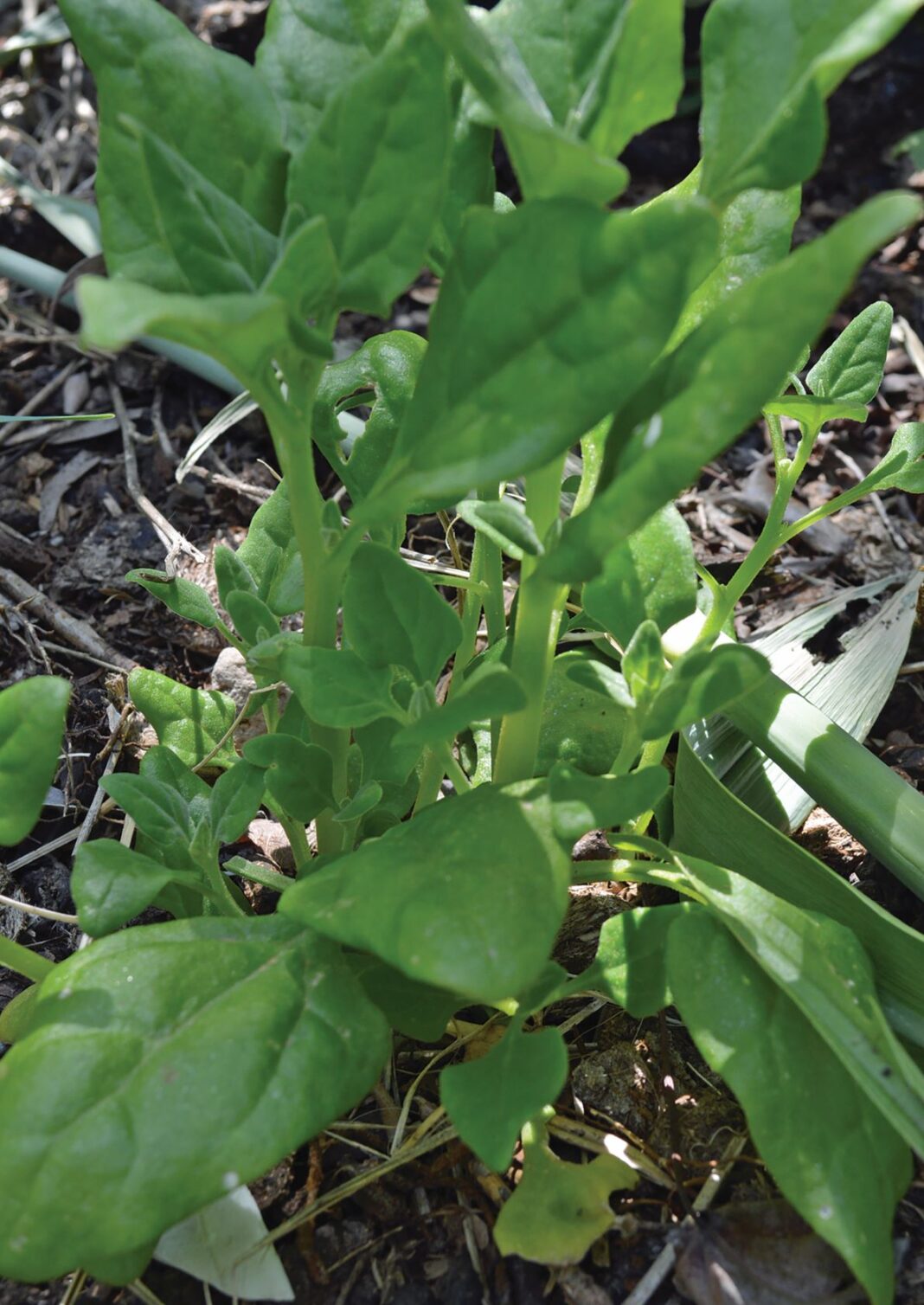Warrigal greens or New Zealand spinach (Tetragona tetragonoides) is a short-lived perennial, occurring in coastal areas of Australia, New Zealand, South America and Japan. This fleshy-leaved plant with small greenish-yellow flowers in spring grows to 30cm high and with a trailing habit.
Warrigal greens have been used as a foraging plant for many years, including by early European settlers in Australia. Both the succulent young leaves and stems are edible. They are high in nutrition, particularly Vitamin C and iron.
As is the case with some of the other leafy greens we eat, such as spinach, warrigal greens contain oxalic acid, toxic to humans in high doses. Blanching the foliage in boiling water for at least one minute before using is all that’s required.
Warrigal greens have a flavour not dissimilar to spinach and can be used in similar ways. They hold their form well during cooking so are handy in stir-fry dishes.
Warrigal greens are easily grown in any sunny to partly-shaded position with reasonable drainage and reliable moisture, including pots. Being a coastal plant, they are also salt-tolerant. Warrigal greens are frost-sensitive so are usually grown as an annual in the Canberra climate. Conveniently, warrigal greens are spared from the attentions of slugs and snails; they are favoured by wildlife, however, including lizards and birds (added bonus if you ask me). Warrigal greens can be left to self-seed; they can also be propagated by cuttings.
In the garden this week
- Keep an eye out for bugs, fungal diseases and other non-beneficial plant anomalies. Symptoms such as wilting, curled, or discoloured foliage; sawdust at branch junctions; sap exuding from branches/trunks and pruning cuts; or, armies of ants on foliage and stems can indicate that all is not well in plant land. Cultural treatments and close observation are the best responses for all involved; use chemical sprays only as a last resort.
- Resist fertilising stressed plants as the last thing they need is to be told to grow when they are under attack; regular applications of plant conditioners such as seaweed extract or comfrey tea are helpful, however.
- Monitor moisture levels as plants are particularly susceptible to water stress at this time of year – higher temperatures, wind and lots of fresh new growth equates to increased water requirements.
- Spring planting season is well under way and before long the heat of summer will slow growth and our gardens will enter into survival mode. The last of your summer veggie seedlings can be planted over the next couple of weeks when at least a few civilised, non-searing days are forecast (to reduce transplant stress).
- Keep bird, bee and lizard baths and water stations full and clean to prevent the spread of disease.
- Leave vegetable and herb plants to flower and seed, as they are a valuable food source for beneficial insects and wildlife. Doing so also helps disguise new plantings from pesky pests.
For more stories:



